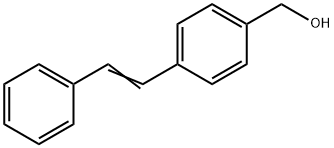METHYLSTYRENE
Synonym(s):Methylstyrene;Vinyltoluene
- CAS NO.:25013-15-4
- Empirical Formula: C9H10
- Molecular Weight: 118.18
- MDL number: MFCD00168067
- EINECS: 246-562-2
- SAFETY DATA SHEET (SDS)
- Update Date: 2024-12-18 14:07:02

What is METHYLSTYRENE?
Chemical properties
Colourless liquid with a strong and unpleasant odour. Very slightly soluble in water; soluble in methanol, ether. Combustible.
Chemical properties
Vinyl toluene is a colorless liquid. Strong disagreeable odor. It consists of mixed meta-and para-isomers. The odor threshold is 50 ppm.
The Uses of METHYLSTYRENE
Solvent, intermediate.
The Uses of METHYLSTYRENE
As a reactive monomer in the production of polymers and coatings.
The Uses of METHYLSTYRENE
Vinyltoluene Monomer (m- and p- mixture) (stabilized with TBC) can be used to treat inflammation.
General Description
A clear colorless liquid with an aromatic odor. Flash point 130°F. Density 7.5 lb /gal. Insoluble in water. May polymerize exothermically if heated or contaminated. If polymerization takes place inside a container, the container may rupture violently. Inhibitor is usually tert-butyl catechol. Vapors heavier than air. Used as a solvent and to make other chemicals.
Air & Water Reactions
Flammable. Insoluble in water.
Reactivity Profile
METHYLSTYRENE polymerizes readily and exothermically [Handling Chemicals Safely 1980. p. 961].
Health Hazard
LIQUID: Irritating to skin and eyes. Harmful if swallowed.
Flammability and Explosibility
Not classified
Chemical Reactivity
Reactivity with Water No reaction; Reactivity with Common Materials: No reactions; Stability During Transport: Stable; Neutralizing Agents for Acids and Caustics: Not pertinent; Polymerization: Slow at ordinary temperatures but when hot may rupture container. Also polymerized by metal salts such as those of iron or aluminum; Inhibitor of Polymerization: Tertiary Butylcatechol (typically 10 to 50 ppm).
Safety Profile
Moderately toxic by ingestion and inhalation. An experimental teratogen. Human systemic effects by inhalation: eye and olfactory effects. Experimental reproductive effects. Mutation data reported. A skin and eye irritant. Flammable when exposed to heat or flame; can react vigorously with oxidrzing materials. When heated to decomposition it emits acrid smoke and irritating fumes.
Potential Exposure
(mixed isomers): Vinyl toluene is used in copolymers and as specialty monomer for paint, varnish, and polyester preparations; as a solvent and an organic intermediate.
Carcinogenicity
The IARC has determined that there is evidence suggesting the lack of carcinogenicity of vinyltoluene in experimental animals and inadequate evidence in humans.
Shipping
UN2618 Vinyltoluenes, stabilized, Hazard Class: 3; Labels: 3-Flammable liquid.
Incompatibilities
Vapors may form explosive mixture with air. Violent reaction with oxidizers (chlorates, nitrates, peroxides, permanganates, perchlorates, chlorine, bromine, fluorine, etc.); contact may cause fires or explosions. Keep away from alkaline materials, strong bases, strong acids, oxoacids, epoxides, catalysts for vinyl polymerization, such as peroxides, strong acids; iron or aluminum salts. Usually inhibited with tert-butylcatechol to prevent polymerization.
Waste Disposal
Dissolve or mix the material with a combustible solvent and burn in a chemical incinerator equipped with an afterburner and scrubber. All federal, state, and local environmental regulations must be observed.
Properties of METHYLSTYRENE
| Melting point: | -77 °C |
| Boiling point: | 169-172 °C(lit.) |
| Density | 0.896 g/mL at 20 °C |
| vapor pressure | 1.5hPa at 20℃ |
| refractive index | n |
| Flash point: | 127 °F |
| storage temp. | 2-8°C |
| solubility | Insoluble in water |
| form | Colorless liquid |
| color | Colorless to Almost colorless |
| Odor | Disagreeable. |
| Water Solubility | 89mg/L at 25℃ |
| BRN | 1209317 |
| Stability: | Stable. Flammable. Incompatible with oxidizing agents, peroxides, strong acids, aluminium chloride. May contain small amounts of t-butylcatechol to inhibit polymerization. |
| CAS DataBase Reference | 25013-15-4 |
| IARC | 3 (Vol. 60) 1994 |
| EPA Substance Registry System | Vinyltoluene (25013-15-4) |
Safety information for METHYLSTYRENE
| Signal word | Danger |
| Pictogram(s) |
 Flame Flammables GHS02  Exclamation Mark Irritant GHS07  Health Hazard GHS08 |
| GHS Hazard Statements |
H226:Flammable liquids H304:Aspiration hazard H315:Skin corrosion/irritation H319:Serious eye damage/eye irritation H332:Acute toxicity,inhalation H335:Specific target organ toxicity, single exposure;Respiratory tract irritation |
| Precautionary Statement Codes |
P210:Keep away from heat/sparks/open flames/hot surfaces. — No smoking. P302+P352:IF ON SKIN: wash with plenty of soap and water. P305+P351+P338:IF IN EYES: Rinse cautiously with water for several minutes. Remove contact lenses, if present and easy to do. Continuerinsing. |
Computed Descriptors for METHYLSTYRENE
| InChIKey | JLBJTVDPSNHSKJ-UHFFFAOYSA-N |
New Products
(S)-3-Aminobutanenitrile hydrochloride 4-Methylphenylacetic acid N-Boc-D-alaninol N-BOC-D/L-ALANINOL Tert-butyl bis(2-chloroethyl)carbamate 3-Morpholino-1-(4-nitrophenyl)-5,6-dihydropyridin- 2(1H)-one Furan-2,5-Dicarboxylic Acid Tropic acid 1-Bromo-3,5-Di-Tert-Butylbenzene S-2-CHLORO PROPIONIC ACID ETHYL ISOCYANOACETATE 2-Bromo-1,3-Bis(Dimethylamino)Trimethinium Hexafluorophosphate 4-IODO BENZOIC ACID 3-NITRO-2-METHYL ANILINE 1-(2,4-DICHLOROPHENYL) ETHANAMINE (2-Hydroxyphenyl)acetonitrile 4-Bromopyrazole 2-(Cyanocyclohexyl)acetic acid 4-methoxy-3,5-dinitropyridine 1-(4-(aminomethyl)benzyl)urea hydrochloride 2-aminopropyl benzoate hydrochloride diethyl 2-(2-((tertbutoxycarbonyl)amino) ethyl)malonate tert-butyl 4- (ureidomethyl)benzylcarbamate Ethyl-2-chloro((4-methoxyphenyl)hydrazono)acetateRelated products of tetrahydrofuran








You may like
-
 Vinyltoluene Monomer (m- and p- mixture) (stabilized with TBC) CAS 25013-15-4View Details
Vinyltoluene Monomer (m- and p- mixture) (stabilized with TBC) CAS 25013-15-4View Details
25013-15-4 -
 Methylstyrene CAS 25013-15-4View Details
Methylstyrene CAS 25013-15-4View Details
25013-15-4 -
 1975-50-4 98%View Details
1975-50-4 98%View Details
1975-50-4 -
 2-HYDROXY BENZYL ALCOHOL 98%View Details
2-HYDROXY BENZYL ALCOHOL 98%View Details
90-01-7 -
 2-Chloro-1,3-Bis(Dimethylamino)Trimethinium Hexafluorophosphate 221615-75-4 98%View Details
2-Chloro-1,3-Bis(Dimethylamino)Trimethinium Hexafluorophosphate 221615-75-4 98%View Details
221615-75-4 -
 61397-56-6 CIS BROMO BENZOATE 98%View Details
61397-56-6 CIS BROMO BENZOATE 98%View Details
61397-56-6 -
 14714-50-2 (2-Hydroxyphenyl)acetonitrile 98+View Details
14714-50-2 (2-Hydroxyphenyl)acetonitrile 98+View Details
14714-50-2 -
 118753-70-1 98+View Details
118753-70-1 98+View Details
118753-70-1